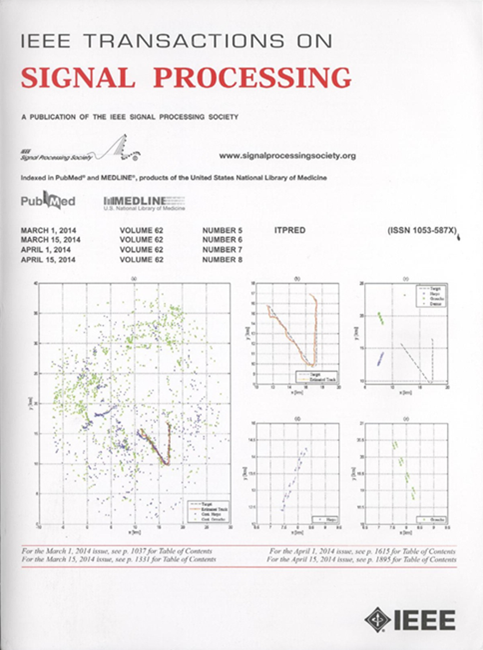基于消息传递的分布式无源MIMO雷达参数联合目标检测与定位
IF 5.8
2区 工程技术
Q1 ENGINEERING, ELECTRICAL & ELECTRONIC
引用次数: 0
摘要
本文解决了分布式双通道无源多输入多输出(MIMO)雷达联合目标检测和定位的挑战,该雷达由多个非合作的机会照射器和接收机组成。在传统方法中,目标位置通常是通过对测试统计量的峰值进行穷举网格搜索来获得的。为了减少网格不匹配导致的误差,网格单元的数量需要很大,这将导致高计算复杂度和阻碍实时处理能力。此外,这些方法在强直接路径干扰下是无效的。本文提出了一种高效的联合目标检测与定位的因子图方法,通过参数估计对目标进行检测与定位,在保持较高鲁棒性的同时显著降低了计算复杂度。特别地,我们引入了一个二元目标存在变量来表示目标的存在与否,并将问题重新表述为未知参数的边际后验概率的计算。在此基础上,提出了一种有效的消息传递算法。大量的仿真结果表明,该方法在各种情况下优于最先进的方法,同时具有更低的计算复杂度。本文章由计算机程序翻译,如有差异,请以英文原文为准。
Parametric Joint Target Detection and Localization Using Message Passing for Distributed Passive MIMO Radar
This paper addresses the challenge of joint target detection and localization with a distributed dual-channel passive multiple-input multiple-output (MIMO) radar, which comprises multiple non-cooperative illuminators of opportunity and receivers. In conventional approaches, the target position is typically obtained by conducting exhaustive grid search for the peak of the test statistics. To reduce the errors due to grid mismatch, the number of grid cells needs to be large, leading to high computational complexity and hampering real-time processing capabilities. Moreover, these approaches are ineffective under strong direct-path interference. In this paper, an efficient factor graph approach for joint target detection and localization is proposed, which detects and localizes the target through parameter estimation, significantly reducing the computational complexity while maintaining high robustness. In particular, we introduce a binary target existence variable to represent the presence or absence of a target and reformulate the problem as the computation of the marginal posterior probabilities of unknown parameters. Then an efficient message passing algorithm is developed to solve the reformulated problem. Extensive simulation results demonstrate that the proposed approach outperforms state-of-the-art approaches in various scenarios, while with much lower computational complexity.
求助全文
通过发布文献求助,成功后即可免费获取论文全文。
去求助
来源期刊

IEEE Transactions on Signal Processing
工程技术-工程:电子与电气
CiteScore
11.20
自引率
9.30%
发文量
310
审稿时长
3.0 months
期刊介绍:
The IEEE Transactions on Signal Processing covers novel theory, algorithms, performance analyses and applications of techniques for the processing, understanding, learning, retrieval, mining, and extraction of information from signals. The term “signal” includes, among others, audio, video, speech, image, communication, geophysical, sonar, radar, medical and musical signals. Examples of topics of interest include, but are not limited to, information processing and the theory and application of filtering, coding, transmitting, estimating, detecting, analyzing, recognizing, synthesizing, recording, and reproducing signals.
 求助内容:
求助内容: 应助结果提醒方式:
应助结果提醒方式:


